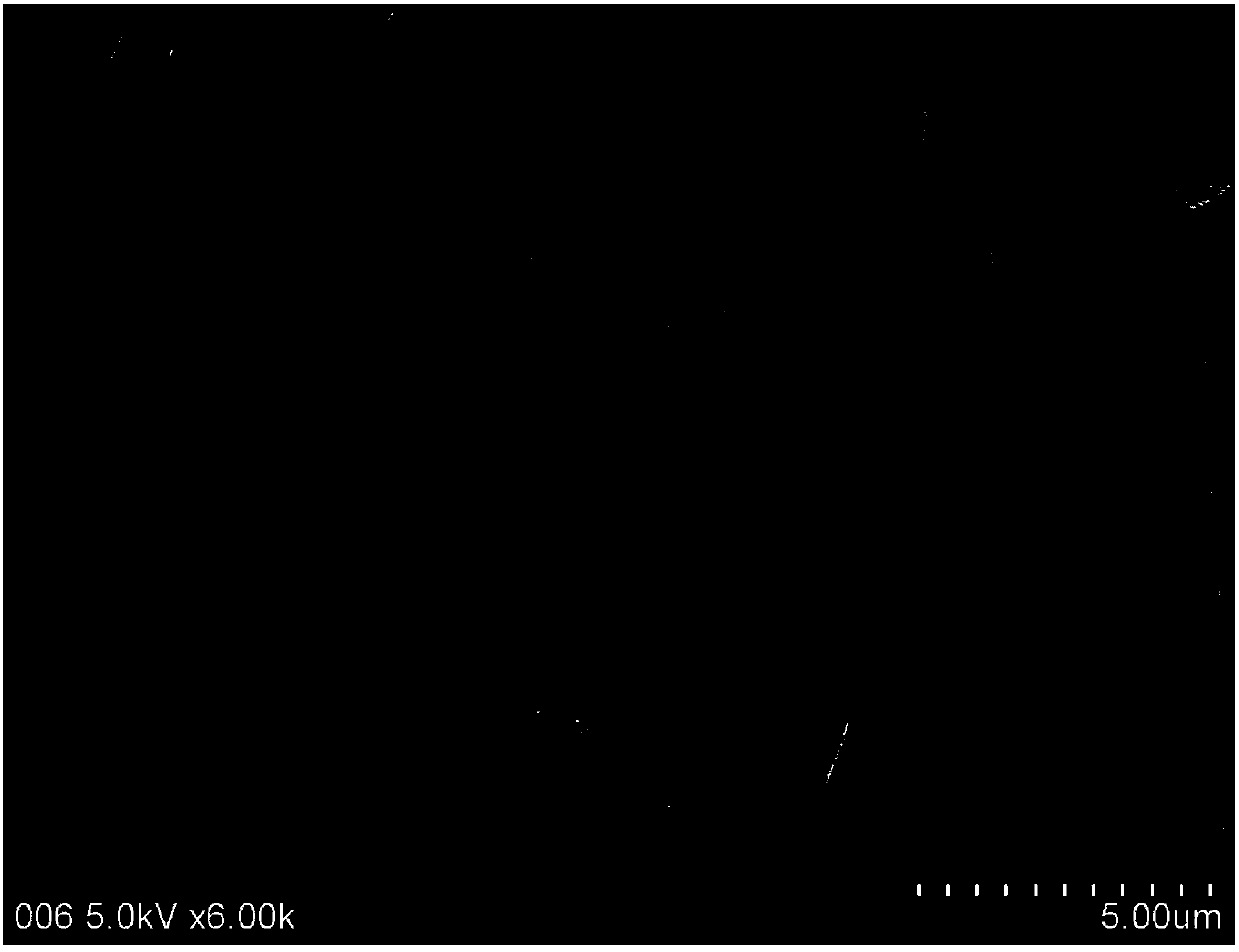Preparation method of temperature-sensitive hollow nanofiber membrane
A temperature-responsive, nanofiber membrane technology, applied in fiber type, fiber processing, conjugated synthetic polymer rayon, etc., can solve the problem of stimuli-responsive intelligent hollow nanofibers that have not been reported in literature, and achieve easy operation. , the process is simple, the effect of good stability
- Summary
- Abstract
- Description
- Claims
- Application Information
AI Technical Summary
Problems solved by technology
Method used
Image
Examples
Embodiment 1
[0037] (1) Add N-isopropylacrylamide, octadecyl acrylate and N-methylolacrylamide into tetrahydrofuran at a molar ratio of 100:3:20 to obtain a reaction solution with a total monomer mass concentration of 45.9%, Under nitrogen atmosphere, stir and react at 65°C for 30min, then add 0.5% initiator azobisisobutyronitrile based on the total mass of the monomer, continue to stir and react at 65°C for 24h, cool down to room temperature, add n-hexane until the white flocculent is completely precipitated The product was dissolved in tetrahydrofuran, and then n-hexane was added until a precipitate formed, filtered at room temperature, and vacuum-dried to obtain a temperature-responsive polymer in the form of white powder.
[0038] (2) Dissolve the temperature-responsive polymer obtained in step (1) in a mixed solvent of deionized water and ethanol with a mass ratio of 1:2, and magnetically stir at room temperature for 12 hours to obtain a polymer solution with a mass concentration of 35...
Embodiment 2
[0042] (1) Add N-isopropylacrylamide, octadecyl acrylate and N-methylolacrylamide into tetrahydrofuran at a molar ratio of 100:3:20 to obtain a reaction solution with a total monomer mass concentration of 45.9%, Under nitrogen atmosphere, stir and react at 65°C for 30min, then add 0.5% initiator azobisisobutyronitrile based on the total mass of the monomer, continue to stir and react at 65°C for 24h, cool down to room temperature, add n-hexane until the white flocculent is completely precipitated The product was dissolved in tetrahydrofuran, and then n-hexane was added until a precipitate formed, filtered at room temperature, and vacuum-dried to obtain a temperature-responsive polymer in the form of white powder.
[0043] (2) Dissolve the temperature-responsive polymer obtained in step (1) in a mixed solvent of deionized water and ethanol with a mass ratio of 1:2, and magnetically stir at room temperature for 12 hours to obtain a polymer solution with a mass concentration of 35...
Embodiment 3
[0047] (1) Add N-isopropylacrylamide, octadecyl acrylate and N-methylolacrylamide into tetrahydrofuran at a molar ratio of 100:3:20 to obtain a reaction solution with a total monomer mass concentration of 45.9%, Under nitrogen atmosphere, stir and react at 65°C for 30min, then add 0.5% initiator azobisisobutyronitrile based on the total mass of the monomer, continue to stir and react at 65°C for 24h, cool down to room temperature, add n-hexane until the white flocculent is completely precipitated The product was dissolved in tetrahydrofuran, and then n-hexane was added until a precipitate formed, filtered at room temperature, and vacuum-dried to obtain a temperature-responsive polymer in the form of white powder.
[0048] (2) Dissolve the temperature-responsive polymer obtained in step (1) in a mixed solvent of deionized water and ethanol with a mass ratio of 1:2, and magnetically stir at room temperature for 12 hours to obtain a polymer solution with a mass concentration of 35...
PUM
| Property | Measurement | Unit |
|---|---|---|
| Average outer diameter | aaaaa | aaaaa |
| Average inner diameter | aaaaa | aaaaa |
| Average outer diameter | aaaaa | aaaaa |
Abstract
Description
Claims
Application Information
 Login to View More
Login to View More - R&D
- Intellectual Property
- Life Sciences
- Materials
- Tech Scout
- Unparalleled Data Quality
- Higher Quality Content
- 60% Fewer Hallucinations
Browse by: Latest US Patents, China's latest patents, Technical Efficacy Thesaurus, Application Domain, Technology Topic, Popular Technical Reports.
© 2025 PatSnap. All rights reserved.Legal|Privacy policy|Modern Slavery Act Transparency Statement|Sitemap|About US| Contact US: help@patsnap.com



